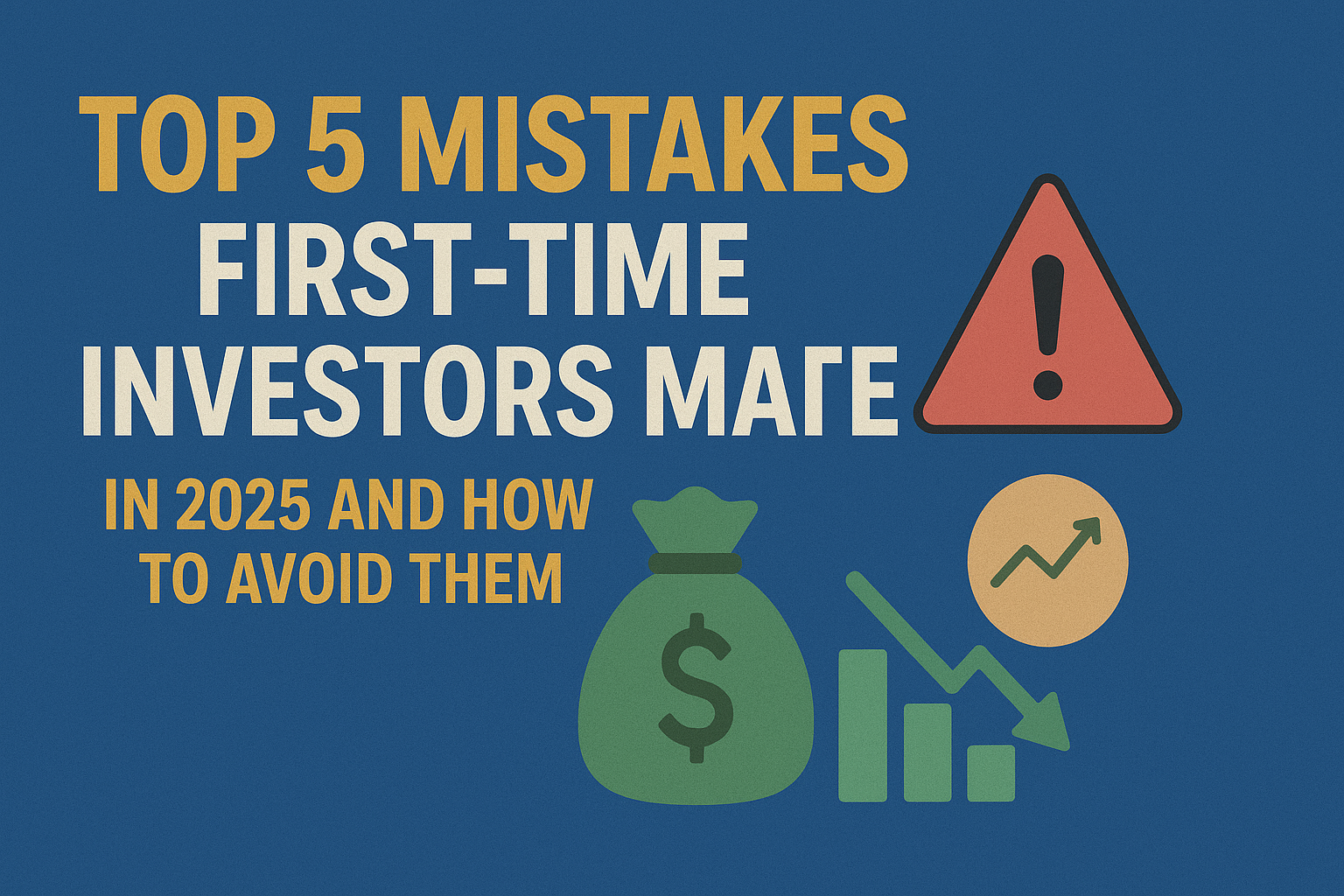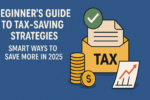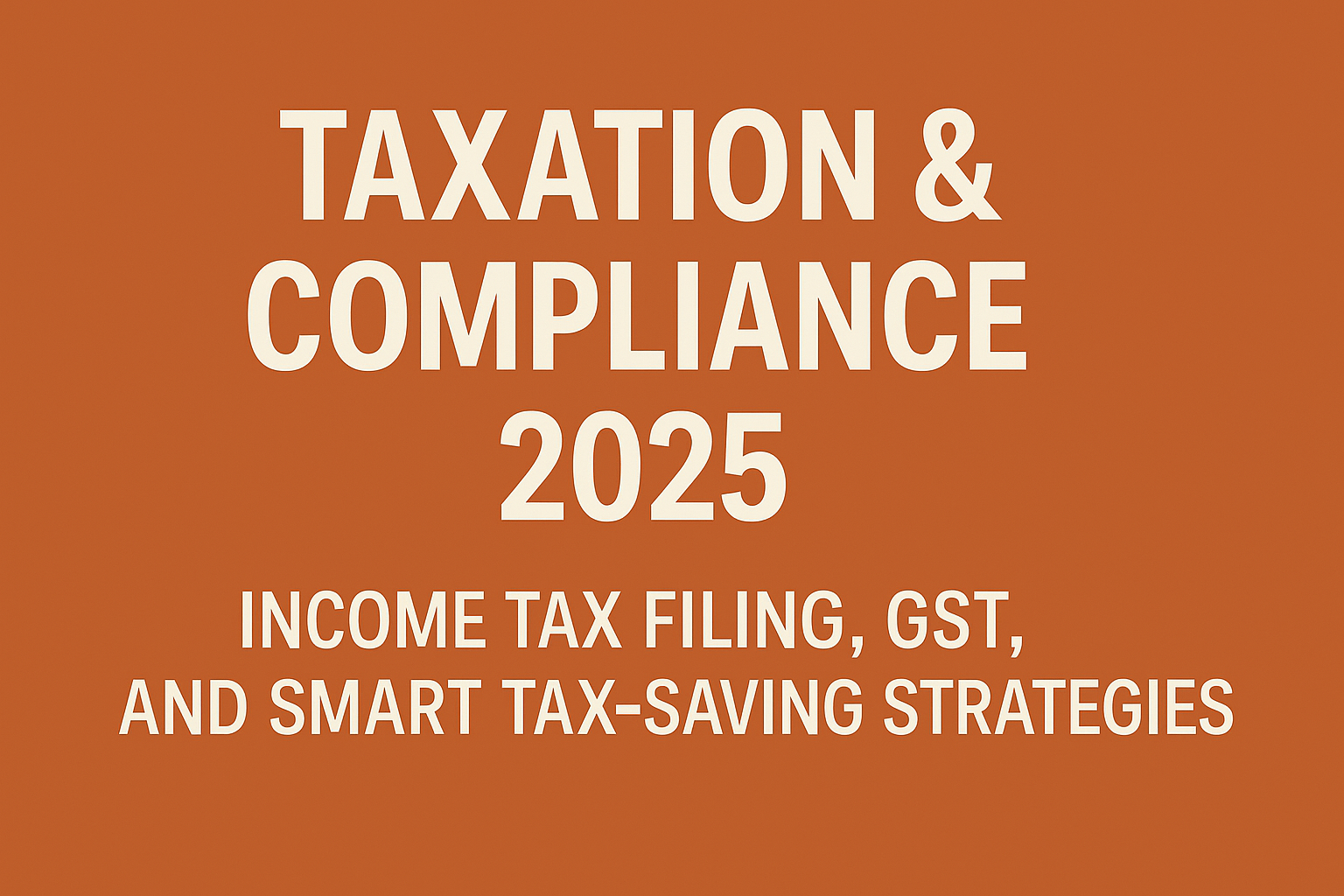Investing is one of the best ways to grow wealth and secure a stable financial future. However, for first-time investors, the journey can be overwhelming. With endless options—stocks, mutual funds, bonds, real estate, and digital assets—many beginners fall into common traps that reduce returns or even lead to losses. In 2025, as markets become more volatile and financial products more complex, avoiding these mistakes is more important than ever.
This guide highlights the top five mistakes first-time investors often make and provides practical strategies to avoid them.
Mistake 1: Chasing Hype Stocks and Trends
One of the biggest mistakes new investors make is chasing stocks or assets just because they are trending. Social media, news headlines, and influencer tips often fuel this hype. While some stocks may give short-term gains, most fail to deliver consistent long-term growth.
For example, many new investors rush to buy shares of companies after a big rally, expecting the price to keep rising. But by the time they invest, the stock may already be overvalued, leading to losses when prices correct.
How to Avoid It:
- Do thorough research before investing. Study the company’s fundamentals, financial health, and growth potential instead of relying only on hype.
- Avoid buying an asset solely because “everyone else is doing it.”
- Focus on long-term value rather than short-term excitement.
Mistake 2: Ignoring Diversification
Many first-time investors put all their money into one stock, sector, or asset class. This lack of diversification increases risk. If that single investment performs poorly, the entire portfolio suffers.
For instance, investing all savings in technology stocks might seem profitable during a boom, but if the sector crashes, losses can be devastating.
How to Avoid It:
- Diversify across different asset classes—equities, bonds, mutual funds, and real estate.
- Within stocks, spread investments across industries like banking, healthcare, IT, and consumer goods.
- Consider index funds or exchange-traded funds (ETFs) for built-in diversification.
Mistake 3: Trying to Time the Market
Many beginners believe they can predict when markets will rise or fall. They wait for the “perfect” moment to buy low and sell high. Unfortunately, even professional investors struggle with market timing. Attempting to do so often results in missed opportunities or panic selling during downturns.
For example, investors who sold their stocks during temporary market corrections often missed out when prices rebounded quickly.
How to Avoid It:
- Instead of timing the market, focus on “time in the market.” Long-term investing generally delivers better results than frequent buying and selling.
- Use strategies like Systematic Investment Plans (SIPs), which spread out investments over time and reduce the impact of market volatility.
- Maintain discipline and avoid emotional decisions.
Mistake 4: Overlooking Risk Management
New investors often underestimate the importance of risk management. Some invest money they cannot afford to lose, while others borrow funds to invest, hoping for higher returns. This approach can backfire if markets fall.
For instance, investing your emergency savings or taking a loan to buy volatile stocks can leave you financially vulnerable during a crisis.
How to Avoid It:
- Never invest money meant for essentials like rent, medical expenses, or emergency funds.
- Understand your risk appetite. If you are risk-averse, focus more on stable options like bonds, fixed deposits, or balanced funds.
- Set stop-loss limits to protect yourself from large losses.
- Keep at least three to six months of living expenses separate in an emergency fund before starting to invest.
Mistake 5: Neglecting Financial Goals and Planning
Many first-time investors jump into the market without a clear plan. They invest randomly without defining why they are investing or what they hope to achieve. Without goals, it is difficult to choose the right investment strategy.
For example, someone saving for retirement 25 years away can take more risks and invest in equities. On the other hand, someone saving for a home in five years should prefer safer options. Mixing the two without a plan often results in poor outcomes.
How to Avoid It:
- Set clear financial goals—retirement, buying a house, funding education, or building wealth.
- Match your investment choices with your goals and timeline.
- Review your portfolio regularly and adjust it as your life circumstances or financial needs change.
Additional Tips for First-Time Investors in 2025
- Start Early, Even Small: Compounding works best when you give it time. Begin with small amounts and increase gradually.
- Stay Educated: Use trusted financial news, courses, or advisors to build your knowledge.
- Avoid Emotional Investing: Greed and fear are the biggest enemies of investors. Stay calm during market ups and downs.
- Use Technology Wisely: Many digital platforms now offer robo-advisors and portfolio trackers that can help beginners make informed choices.
Final Thoughts
Also Read : Wealth Building & Retirement Planning 2025: Passive Income, Pensions, and Early Retirement Strategies
Investing is a powerful tool to build long-term wealth, but only if approached with discipline and awareness. The most common mistakes first-time investors make—chasing hype, ignoring diversification, timing the market, neglecting risk management, and skipping goal-setting—can be avoided with careful planning and patience.
In 2025, with access to digital tools, educational resources, and diversified financial products, there has never been a better time to start investing. The key is to learn continuously, stay disciplined, and focus on your financial goals rather than short-term trends.






